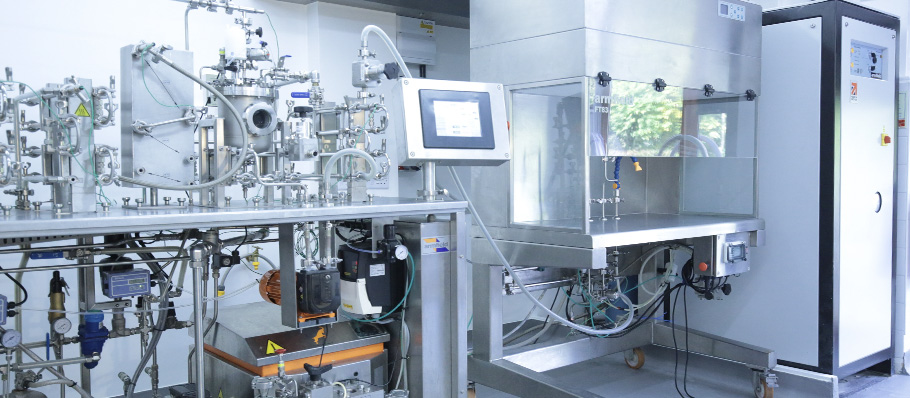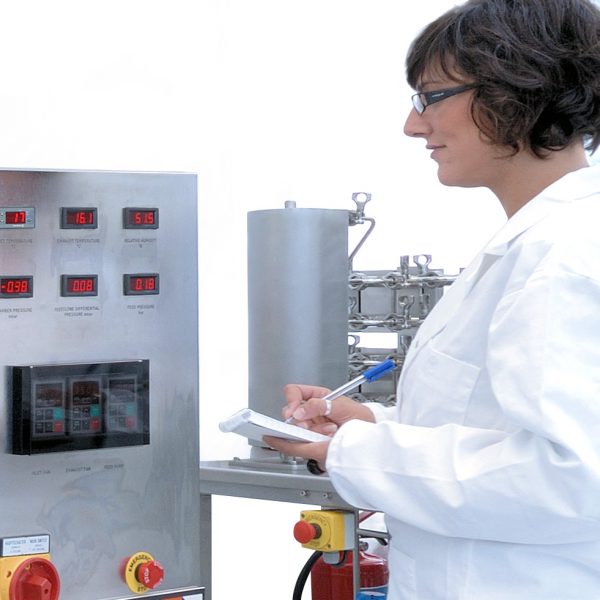The Impact of Steam Generators in Modern Laboratories

Steam generators for laboratory use are essential tools that ensure consistent performance, precise control, and safe operations. At Armfield, we’re proud to provide world-class laboratory steam generators designed to deliver contaminant-free, high-quality steam for a wide range of applications—from sterilisation to pharmaceutical product development.
Our innovative systems support cutting-edge laboratory work with precision, reliability, and flexibility. But what exactly are steam generators, and why are they so crucial?
What Is a Laboratory Steam Generator?
A steam generator is a specialised device that heats water to produce saturated steam, typically at high temperatures and operating pressure, to serve a variety of laboratory needs. Unlike traditional industrial boilers, laboratory steam generators are purpose-built to offer compactness, energy efficiency, and a cleaner output, commonly referred to as pure steam or clean steam.
At Armfield, our units are trusted by researchers across scientific disciplines for their ease of use, safety features, and ability to deliver high-performance results with minimal downtime.
Types of Steam Generators Used in Laboratories
Laboratories require a diverse range of solutions depending on their workflow and spatial limitations. The most common types of steam generators for laboratories include:
-
Electric Steam Generators – Clean, compact and energy-efficient, with precise temperature control. Perfect for delicate sterilisation tasks.
-
Gas-Fired Generators – Suitable for higher volume operations, but require a proper gas supply and ventilation.
-
Oil-Fired Generators – Less popular due to their maintenance requirements and emissions, though still used in some industrial-style lab settings.
Among these, electric steam generators are the most widely adopted in modern laboratory settings due to their ease of installation and clean output.
Key Applications of Laboratory Steam Generators
Steam generators are essential in a variety of research and healthcare tasks. Applications include:
-
Autoclaves – Used for sterilising lab tools and materials under high pressure.
-
Distillation – Steam assists in separating compounds through heat transfer.
-
Sterilisation of Glassware and Instruments – Especially where contaminant-free steam is required.
-
Chromatography Equipment Maintenance – Ensures clean operation and prevents analytical interference.
The ability to produce pure steam on demand is crucial for ensuring reproducibility and compliance in pharmaceutical and academic labs alike.
Advantages of Using Steam Generators in the Lab
The benefits of integrating a steam generator into your lab include:
-
Consistent Steam Quality – Helps maintain sterility and experiment integrity.
-
Energy Efficiency – Especially true of electric models with modern control systems.
-
Reduced Footprint – Compact designs suit smaller labs.
-
Safety Features – including pressure control systems, over-temperature cut-outs, and automatic shutdown.
At Armfield, each unit is engineered with precision, combining performance and reliability with built-in safety.
How to Choose the Right Steam Generator
Choosing the correct steam generator for your laboratory setup is key. Factors to consider include:
-
Steam Output Requirements – Choose a unit that matches your autoclave or sterilisation demands.
-
Energy Source Availability – Electric is often preferred for simplicity, while gas or oil may suit larger installations.
-
Space Constraints – Portable and benchtop models are available.
-
Steam Quality Standards – Applications involving pharmaceuticals or sensitive chemicals will demand pure steam capabilities.
One standout option in Armfield’s range is the UOP10 Laboratory Steam Generator. This compact, floor-standing unit delivers up to 55 kg/hr of saturated steam at 10 bar pressure, powered by dual 36 kW Incoloy heating elements. It’s engineered for reliability, continuing to function even if one element fails. With a built-in water reservoir, silent high-pressure feed pump, and intuitive LED indicators, the UOP10 is easy to operate and quick to start. It includes essential safety features such as pressure relief valves, low-water cut-off, and electrical protections, all housed in a durable steel cabinet. The UOP10 complies with UK and EU pressure equipment standards and is ideal for labs requiring high-performance steam with minimal footprint. An optional blow-down separator is also available for compliant discharge handling.
FAQs
How do steam boilers generate high temperatures and pressure for laboratory use?
Laboratory steam generators use electric heating elements or gas burners to rapidly raise water to boiling, producing saturated steam under controlled pressure. This allows precise delivery of high temperature steam for sterilisation and heating.
What are some key differences between traditional boilers and electric steam generators used in laboratories?
Traditional steam boilers are large, often complex, and use fossil fuels. In contrast, electric steam generators are compact, clean, and designed for quick, efficient operation in research settings.
What is the role of sterilisation in laboratory processes, and how do steam generators help?
Sterilisation eliminates harmful microbes and ensures clean conditions. Steam generators supply high-quality steam for autoclaves, decontaminating equipment efficiently without chemical residue.
Can electric alternatives meet the same standards of temperature and pressure required for lab use?
Yes. Modern electric laboratory steam generators from Armfield are capable of producing steam at the required temperatures and pressures, all while offering enhanced safety and control features.
Maintenance and Safety Precautions
Running a laboratory steam generator safely and effectively involves routine checks and maintenance:
-
Descaling – Prevents build-up in heating elements when using untreated tap water.
-
Valve Inspections – Ensure steam and safety valves are functioning properly.
-
Sensor Calibrations – Keep pressure and temperature readings accurate.
-
Routine Testing of Security Features – Modern generators include failsafe shutdowns and pressure relief valves to mitigate risks such as overheating.
Always consult your user manual and perform regular maintenance in line with manufacturer guidelines to ensure longevity.
Setting Up a Laboratory Steam Generator
Installation can vary slightly depending on the generator type, but general steps include:
-
Ensure Proper Ventilation – Especially critical for gas or oil-fired units.
-
Correct Power Supply – Verify voltage and safety switches.
-
Water Quality Management – Use RO or filtered water when steam quality is critical.
-
Follow Manufacturer Instructions – Missteps during setup can lead to inefficiency or hazards.
We always recommend professional installation and commissioning for optimal safety and performance.

Troubleshooting Common Issues
Even with top-tier equipment like Armfield’s, minor issues may arise. Common problems include:
-
Low Steam Pressure – Often caused by scale or malfunctioning sensors.
-
Leaks – Check seals, joints and safety valves.
-
Overheating – May relate to thermostat failure or mineral build-up.
-
Steam Discolouration – Could indicate contaminants in water—avoid using untreated tap water in high-purity applications.
Timely intervention and proper maintenance can prevent costly downtime.
Why Choose Armfield?
At Armfield, our commitment to innovation, precision engineering, and user safety sets us apart. We’ve been a trusted supplier of steam generators for laboratories for decades, supporting scientists, educators, and industrial researchers with reliable equipment built to last.
We understand the demands of modern laboratories and are proud to offer tailored solutions for sterilisation, process control, and product development, especially in the pharmaceutical and life science sectors.
Additionally, you may be interested in our

Speak to Our Team About Lab Steam Generators
Need expert advice on upgrading or specifying a new laboratory steam generator? Armfield’s dedicated support team is here to help.
Related Articles
- What is Direct Steam Injection?
- UOP10 Laboratory steam generator
- TH6 Film & Dropwise Condensation Unit

Armfield can trace its history back over 130 years, throughout which, the Company’s policy of quality, innovation and service has helped it to maintain a strong market position and develop a reputation for industry leadership in the field of Engineering teaching.
Education Division
Operating since 1963, the Armfield Education Division designs and manufactures equipment for engineering education and research.
Industrial Division
The Armfield Industrial Division designs and manufactures research & development systems, primarily for the food, beverage, dairy, edible oil and pharmaceutical industries.




































